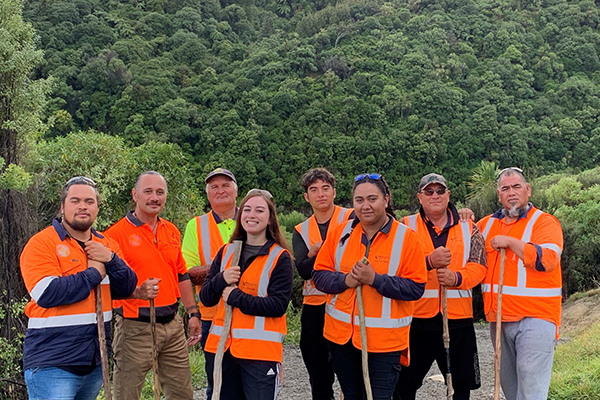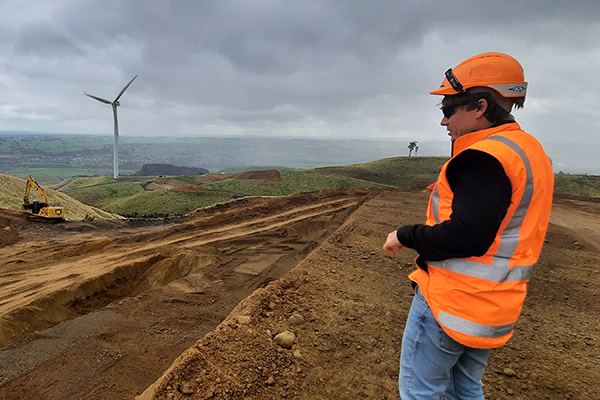Small-Medium Organisation Winner

When a massive slip in the Manawatū gorge left the road impassable in April 2017, the impact on local communities and the wider region was huge and a new route was urgently needed.
Shortly after the slip, Waka Kotahi NZ Transport Agency worked with iwi to trial a new approach to genuine Crown-Iwi partnerships.
The new highway route traverses the Ruahine Ranges and a culturally significant landscape including Te Āpiti (Manawatū Gorge) and the Manawatū River and its tributaries; Parahaki Island (Māori freehold Land, represented by Te Āpiti Ahu Whenua Trust); Te Ahu a Turanga (the resting place of Turanga-i-Mua), and the Te Ahu a Turanga track, an important historic route between the east and west.
Regional Manager Infrastructure Delivery, Central North Island (Waka Kotahi NZ Transport Agency) Lonnie Dalzell says five iwi have a connection to the project area, and while there was a long history of inter-iwi connection, they had not sat around the table together before.
“In an historic first for Aotearoa, iwi are partners in the Te Ahu a Turanga Alliance, which comprises Rangitāne o Manawatū, Rangitāne o Tamaki nui-a-Rua, Ngāti Kahungunu ki Tāmaki nui-a-Rua, Te Runanga o Raukawa (Ngāti Raukawa and Nga Kaitiaki ō Ngāti Kauwhata) along with Waka Kotahi NZ Transport Agency, HEB Construction, Fulton Hogan, Aurecon and WSP,” he says.
“The partnership is more than a single initiative; the partnership is the heart of the project. Without it, the highway wouldn’t be happening.”

The Alliance’s approach to partnership and co-design holds people and culture in the centre, within the wider environmental context.
The workforce is projected to grow significantly with up to 350 people employed at any one time. An estimated 5000 will have worked on the project by completion.
The Alliance has committed to making sure that every single person – along with their whānau – who works on the project has a sense of belonging, and the opportunity to be part of its holistic approach to health and wellbeing. A commitment to te ao Māori is at the heart of all decisions.
Alliance Project Director Tony Adams says, “Working together to develop a project whānau has provided the opportunity to honestly explore what partnership means for us, and enabled us to forge an Alliance culture where the word partnership is no longer needed; we are a unified team. This approach has deeply integrated te ao Māori into the design development and construction methodologies in a way that appropriately celebrates this area and its rich cultural heritage.”


